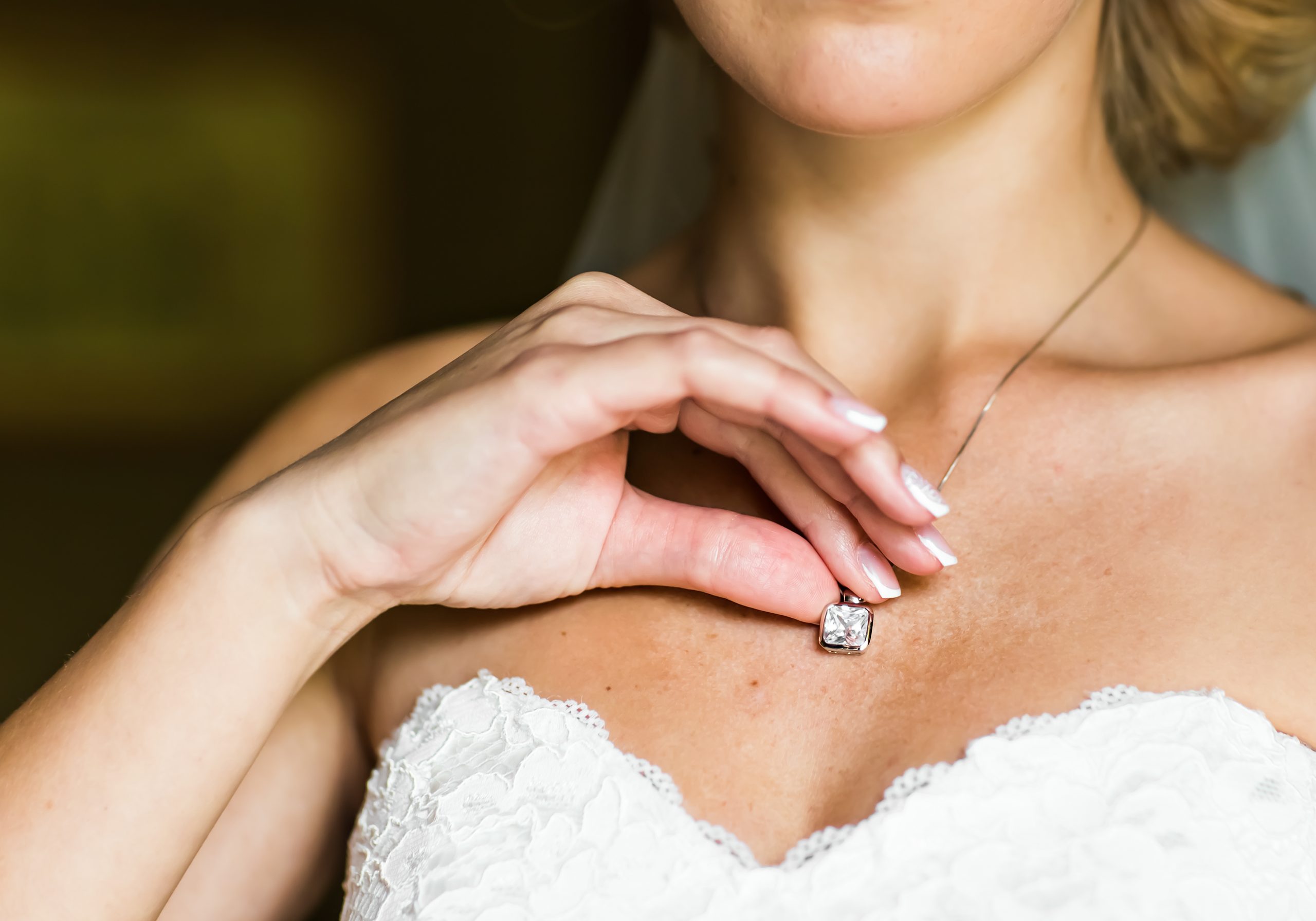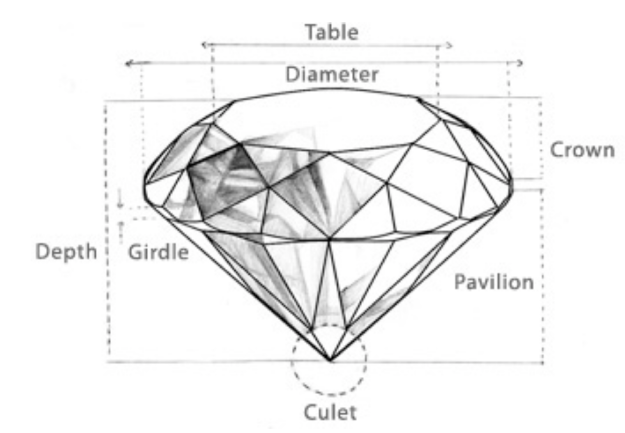Diamond Cut Guide

Diamond Cut Guide
The cut of a diamond refers to its proportions, symmetry and polish. These are the three main factors that affect the diamond’s ability to return light. Another term that is used to describe a diamond’s light performance is “brilliance”.
A diamond that is ideally cut produces high light return, scintillation, fire and spectacular brilliance. A poorly cut diamond causes light to leak out the bottom or sides of the diamond, thereby minimizing the amount of light that is allowed to reutrn via the diamond’s top and specifically its table. Even a diamond that has exceptional color and clarity can appear lifeless and dull when it is poorly cut. For this reason, The Diamond Vault suggests that you choose the diamond with the highest cut grade that falls within your budget.
The cut of a diamond can be assessed in three main areas::
Brilliance
Fire
Scintillation
Understanding Diamond Anatomy
It is important to understand the basic terms that define a diamond's anatomy. All of these terms are referred to on most diamond certificates.
Diameter: The diameter is the width of the diamond from one side of the girdle to the other. The diameter is expressed in millimeter dimensions.
Table: The table is large, central facet of the diamond at its top. The table proportion is expressed as a percentage that represents the size of the table relative to the size of the diamond's overall surface area.
Crown: The crown is the series of facets that drop from the table down to the diamond's girdle. The crown is expressed as either a percentage or in radian degrees (or both). This represents the slope of the drop from the table to the diamond's girdle.
Girdle: The girdle is the edge of the diamond at the point where the crown meets the pavillion. The girdle is expressed in terms that refer to its average thickness or range of thicknesses all around the diamond's girdle. It can also be expressed as a percentage.
Pavilion: The pavilion is the underside of the diamond that starts at the girdle and extends towards the diamond's culet. The pavillion is expressed as a percentage or radian degrees that represent the slope of the pavillion facets.
Culet: The culet is the tip at the bottom of the diamond. If there is no facet at the bottom and the diamond comes to a sharp tip then it is represneted as "None". Otherwise, the culet is represented on the certificate in terms that reflect the size of the facet at the tip.
Depth: The depth of a diamond refers to the total height of a diamond, measured from the table to the culet. In round diamonds, the depth is referred to in a percentage that reflects the proportion of the the diamond's depth to the average diameter (taking two cross sections in a round diamond). In shapes other than round the depth is referred to as a percentage representing the proportion of the diamond's height relative to diamond's shorter side (its width).
Diamond Proportion
In order to maximize light-return and improve the appearance of the diamond, the diamond must have accurate and optimal proportions. Pavillions angles that are too deep or too shallow will cuase light to leak out thereby creating dark areas in the diamond. The crown angles govern the way taht light enters and exits the gem and are therefore also very important.
The pavillion and crown angles work in conjunction with teh diamond's depth and table percentages to define how the diamond is proportioned onto itself. Round diamonds are considered well proportioned when their tables fall between 53 and 59% and their depths fall in the 59 to 62.5% range.
Diamond Symmetry
A diamond that is not highly symmetrical may be able to return light, but its light return may look imbalanced and distorted. Symmetry is a holistic measure that governs many different attributes that include how centered the table is, how crown and pavillion facets line up next to each other symmetrically, and whether the diamond has extra facets. It is recommended to buy round diamonds whose symmetry is no lower than Very Good and fancy shaped diamonds (anything other than round) with symmetry no lower than Good.
Diamond Polish
After the diamond has been cut it undergoes a process by which every one of its facets is polished. A diamond that is improperly polished will have evidence of "polish lines" on it that reduce the diamond's ability to return light and sparkle. Diamonds whose polish is Good or better do not have polish lines that cannot generally be seen under 10X magnification and usually require 30X.
Cut Grades
Ideal/ Excellent
Excellent light return and performance. The diamond is able to reflect almost all of the light that enters it. Beautiful and rare cuts. Referred to as Five Star cuts by The Diamond Vault.
Very Good
Very good light return and performance. The diamond reflects almost all of the light that enters. Very Good diamond cuts are considered to be an outstanding value. Referred to as Four Star cuts by The Diamond Vault.
Good
Good light return and performance. The diamond reflects most of the light that enters. Good diamond cuts are far less pricey than Very Good cuts. Referred to as Three Star cuts by The Diamond Vault.
Fair
These diamonds are not as brilliant as a Good cuts or above, Fair diamond cuts are still considered good quality diamonds. Referred to as Two Star cuts by The Diamond Vault.
Poor
Poorly cut diamonds are typically cut too shallowly or deeply causing a large amount of light leakage. The Diamond Vault does not carry these diamonds.